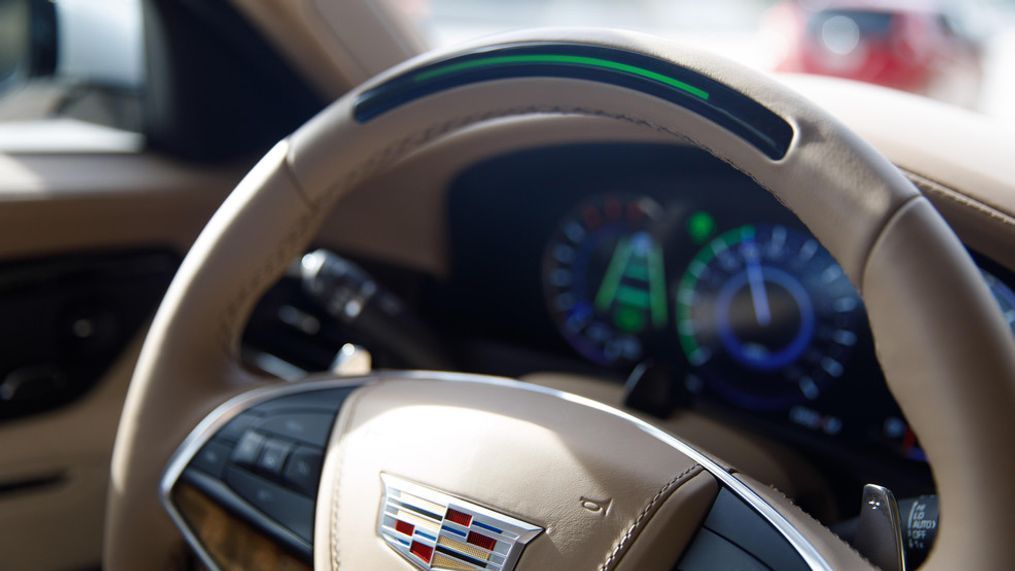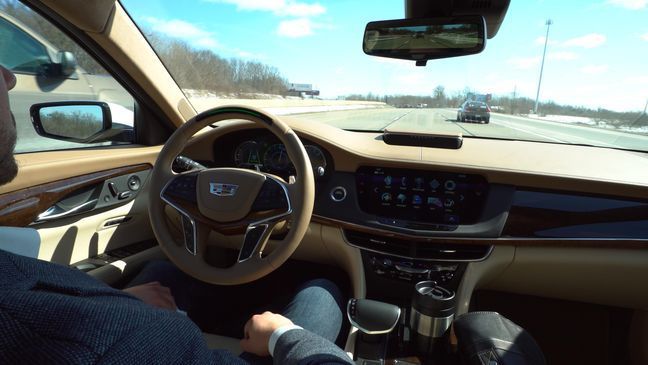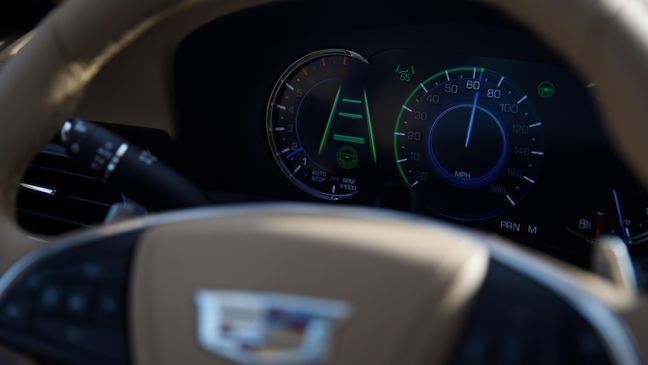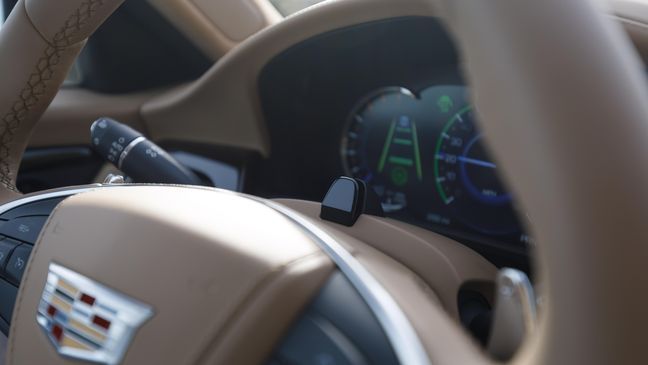GM swings back at Tesla with Super Cruise self-driving software
TOPICS:
Super CruiseYesterday, Tesla slipped past General Motors to become America's most highly valued automaker. Now, GM says that it's planning to equip one of its luxury sedans, the Cadillac CT6, with "the industry’s first true hands-free driving technology"--a not-so-subtle jab at Tesla's well-known semi-autonomous Autopilot software.
Coincidence? Probably, but you couldn't ask for better timing.
A look back
We got our first glimpse of GM's Super Cruise software four years ago, in April 2013. The following September, GM said that Super Cruise would offer consumers "almost autonomous" driving by the year 2020. One year later, GM moved up its timeline considerably, announcing that Super Cruise would debut in 2016 on 2017 model-year vehicles.
Alas, 2016 came and went without Super Cruise putting in an appearance. However, Tesla's Autopilot software garnered plenty of headlines--not all of them good.
Though fans were ecstatic about Autopilot's sudden arrival in late 2015 and its subsequent "Summon" feature, critics attacked Tesla in the wake of a fatal car crash that occurred while Autopilot was engaged. Then, there were some issues in China and another in Germany. Things reached a fever pitch in October when Tesla CEO accused Autopilot's critics of "killing people."
As a result, self-driving cars were a frequent--and frequently heated--topic of conversation last year. Did the controversy slow the roll-out of Super Cruise? GM isn't saying, but now, it's back in the game.
Super Cruise features
If you were hoping that Super Cruise would take on all of the driving duties, you're going to be disappointed. GM is clear to point out that it's "hands-free driving technology for the highway" (emphasis ours).
In other words, it's a lot like Tesla's current Autopilot system, which is designed primarily for use at higher speeds. However, GM has added something else: a "driver attention system."
According to engineer Barry Walkup, the Super Cruise team wanted "to keep the driver engaged during operation." It does that by way of a camera atop the steering column that's focused on the driver, using infrared lights to tell where a driver's attention is focused. That's a bit different from, say, Autopilot, which uses sensors to ensure that drivers keep their hands on the steering wheel.
If a driver isn't paying attention, Super Cruise will sound a series of alerts to guide the driver's eyes back to the road. Should that fail to work, the software gets a little more aggressive:
"If the system determines continued inattentiveness, a steering wheel light bar guides the driver to look at the road or take back control of the wheel. Additional alerts can include visual indicators in the instrument cluster, tactile alerts in Cadillac’s Safety Alert Seat and audible alerts, if necessary. In the limited event of an unresponsive driver, the Cadillac CT6 utilizes the full capability of onboard driver assistance technologies to bring the car to a controlled stop and contact OnStar to alert first responders, if necessary."
Super Cruise differs from Autopilot in another way: it relies on light detection and ranging technology (LiDAR), not radar, for mapping the environment.
Tesla has generally dismissed LiDAR, insisting that radar and cameras are a superior combination, especially in inclement weather. Most other automakers, however, have found value in LiDAR, and GM is no exception. Super Cruise employs a network of gadgets, including LiDAR, cameras, sensors, and GPS.
When engaged, Super Cruise will offer a full suite of self-driving features, including automatic lane-centering. It will also feature hands-free capability, allowing drivers to access navigation, their phones, music, and more, just by speaking.
For the foreseeable future, Super Cruise will be limited to use on larger, divided highways--specifically, those with well defined on- and off-ramps. (The system's GPS will help determine whether or not Super Cruise can be activated.) That means that Super Cruise won't have to deal with trickier situations like intersections and such.
According to GM, it also means that Super Cruise will be focused on the kind of driving that commuters do the most. According to Walkup:
"American drivers travel twice as many miles on urban and suburban highways as they do on rural roads. Super Cruise allows hands-free driving and operates only within the environment where it has the most benefit. While it is technically possible for the technology to drive hands-free on other kinds of streets and roads, we feel strongly that this targeted approach is the best to build consumer and regulatory confidence and enthusiasm for advanced mobility."
Super Cruise will debut this fall in the U.S. and Canada as an option on the 2018 Cadillac CT6 sedan--though of course by then, it's entirely possible that Tesla will have made Autopilot fully self-driving. Stay tuned.
Read more from Internet Brands Automotive:
- 2018 Dodge Demon delivers 840 horsepower, does 0-60 in 2.3 seconds
- Hellcat-powered 2018 Jeep Grand Cherokee Trackhawk arrives with 707 horsepower
- 6th-gen Camaro Trans Am conversion comes packing 1,000 horsepower
- Dodge can't stop dealers from pricing Demons above MSRP, but is taking some measures
- 2018 Lincoln Navigator debuts at 2017 New York auto show
- 2018 Buick Regal video preview




